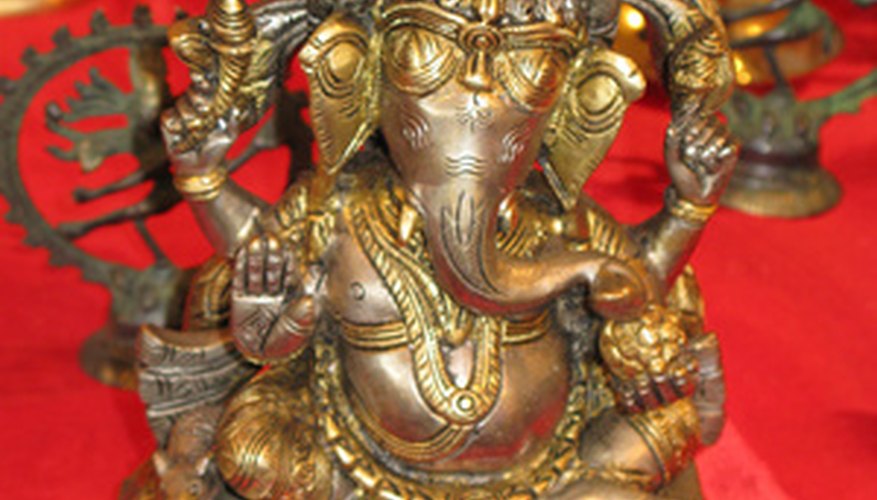Using bronzing paints and powders can help create an old world-lustre for new objects, or help restore your favourite antiques to their former glory.
Commercial bronzing paints can be found ready to use, made by combining bronzing powder and a clear base. They are easy to find and use, but they often don't have enough bronzing powder in them to achieve a rich finish. You can make your own bronzing paint by purchasing bronzing powder and mixing it yourself with a clear glaze.
Clean and prime the object to be painted. If you are just touching up a bronze item, you do not need to prime it.
Be sure to choose the appropriate primer for the material you're working on. Autobody primer works well on metal objects, while wood objects will need to be thoroughly sanded and sealed with lacquer to eliminate any trace of grain and prepare the surface for bronzing.
- Using bronzing paints and powders can help create an old world-lustre for new objects, or help restore your favourite antiques to their former glory.
- Autobody primer works well on metal objects, while wood objects will need to be thoroughly sanded and sealed with lacquer to eliminate any trace of grain and prepare the surface for bronzing.
Stir bronzing powder into one cup of clear glaze. Add the powder gradually until it is the consistency of cream, using more or less depending on how rich you want the bronze to look. Do not mix more paint than you will use within a few hours, as the glaze will eventually cause the bronze powder to oxidise, changing the colour.
- Stir bronzing powder into one cup of clear glaze.
- Add the powder gradually until it is the consistency of cream, using more or less depending on how rich you want the bronze to look.
Paint the liquid onto the object using smooth strokes, allowing the paint to flow easily. You want the coat of paint to be just thick enough to cover the object, if you want a completely bronzed effect. If you push too hard with the paint brush, the coverage will be thin and uneven. If you use too much paint you may end up with a dripping mess. Experiment with stroke techniques and do not worry if the first coat is too sparse, as you can paint again when it has dried.
